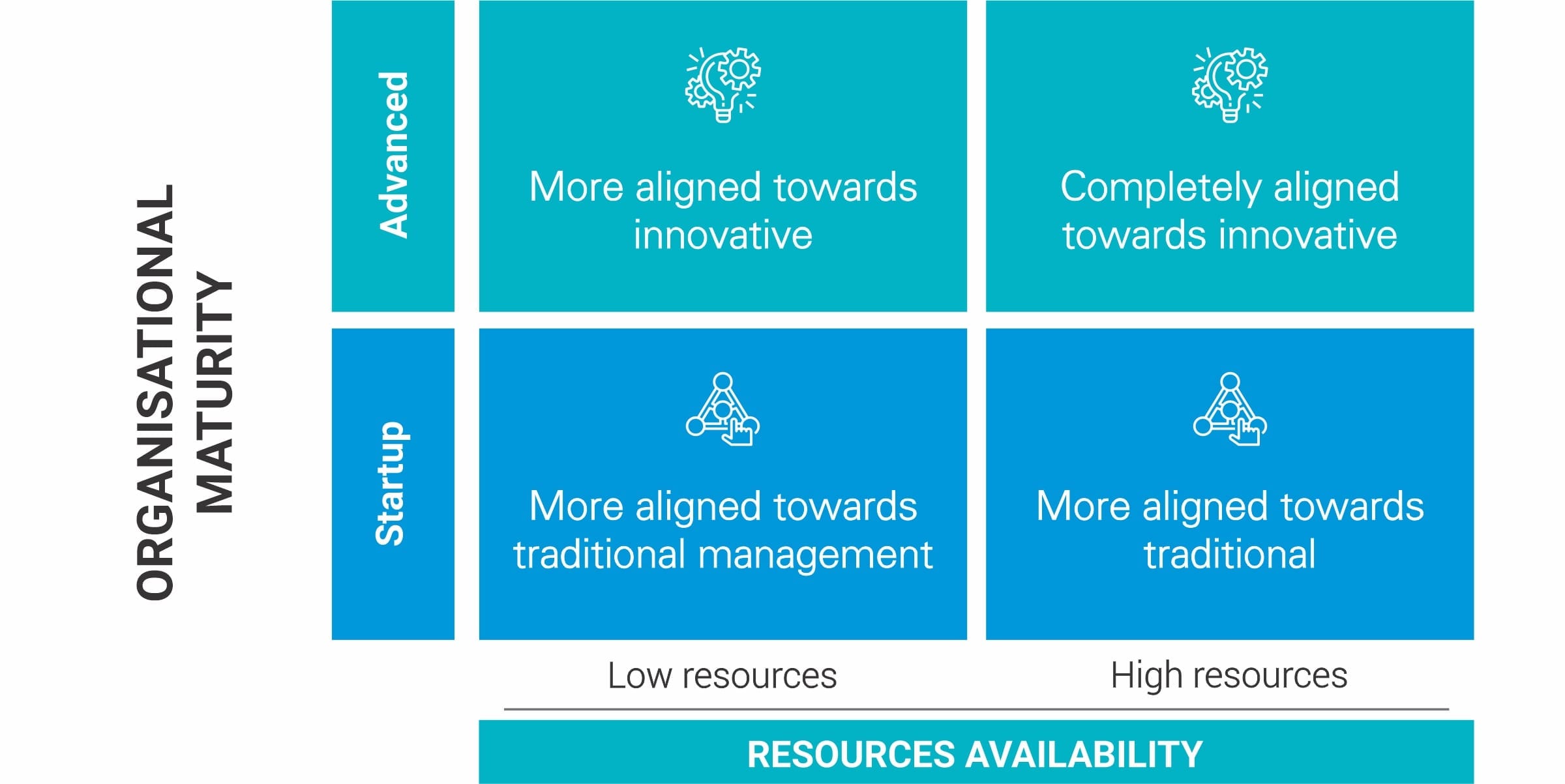The world is changing very fast, and so are individuals, families, businesses, societies, nations, and continents. The changes in the world have impacted the business world the most. These changes include the new workforce (millennials), artificial intelligence, Internet of things, blockchain technologies, big data, and most recently coronavirus. In fact, our era has been divided into the pre-COVID era (before March 2020), COVID era (March 2020 till date), and post-COVID era (after COVID-19). All aspects of our daily lives and businesses will be impacted Post-COVID; hence the need for innovation.
Foluso Phillips, the Chairman of pcl., simply defined innovation as ‘the next level of convenience’. For organisations, innovation is not necessarily about new products and services but also about new ways of working – management innovation. Organisations that invest in management innovation are developing a sustainable source of competitive advantage. In today’s world, the biggest driver for management innovation is the internet. The internet democratises information flow against the traditional hierarchical flow. Management innovation is often a two steps forward and one step back exercise. Therefore, there is room for failure!
Most organisations fail to distinguish between their business model and management model (if at all they have one). While the former refers to the company’s formula for making money, the latter refers to the choices the company makes around (1) Coordination, (2) Defining Objectives, (3) Motivation, and (4) Decision Making. In the traditional management model, coordination is achieved through bureaucracy, objectives are set through linear alignment, people are motivated by extrinsic rewards, and decisions are made according to hierarchy.
Coordination is about managing horizontally and will remain a key management function which has long been achieved through bureaucracy. However, the changing business environment is making bureaucracy less efficient and giving rise to the concept of “Emergence” – the guiding structure that stimulates individuals to coordinate their activities in a focused way and on their own volition through self-interested behaviours. Emergence promotes agility, creativity and energises teams. While Emergence is a good idea, it must be structured with clear boundaries and direction – bureaucracy. Therefore, every organisation in deciding how to execute its coordination function of management innovatively will choose the right mix of emergence and bureaucracy.
Objectives are usually defined as part of corporate strategy and cascaded from top to bottom (linear alignment) to ensure that all employees are working towards the achievement of the explicit objectives. Here, managers try to be prescriptive in directly driving employees towards the achievement of goals. However, the changing business environment is making linear alignment less effective and giving rise to the concept of “Obliquity” – the process of achieving objectives indirectly. The most prominent example of obliquity in business is the profit-seeking paradox, which is the idea that the most profitable companies are not the most profit-oriented. For instance, an airline seeking to increase revenue should focus on ensuring that their aeroplanes depart on time. An individual seeking happiness should concentrate on making others happy, and companies that want to adopt a ‘customer-first policy’ must focus on selling and driving an ‘employee first policy’. Adoption of obliquity might create ambiguity for employees, uncertainty for shareholders, and risk for the organisation. However, it is a proven principle for defining and sustainably delivering objectives. Therefore, organisations must settle for the right mix between linear alignment and obliquity.
Motivation is an agelong concept that Wright Eisenhower described as ‘the art of getting people to do what you want them to do because they want to do it’. There have been several popular theories such as Abraham Maslow’s Hierarchy of Needs theory, Frederick Herzberg’s Hygiene & Motivational Factors theory, and Douglas MacGregor’s Theory X & Y. In practice, however, motivation could be driven by either extrinsic, intrinsic or a combination of both factors. Most organisations rely more on extrinsic motivation drivers such as salaries and bonuses than on intrinsic factors such as greater authority, public recognition, and higher responsibilities. This is because they are easy to implement, sustainable, and could be directly linked to output. Nevertheless, as indicated by Herzberg’s theory and several other studies, extrinsic drivers are necessary but insufficient without intrinsic drivers. Therefore, every organisation must decide on the right mix between intrinsic and extrinsic factors in motivating people.
Decision making, which is a crucial management function, is about managing vertically and is achieved through hierarchy. While Hierarchy helps in providing structure, accelerating decision making, and ensuring alignment between power and accountability, it rides on the wrong assumption that the person above (the manager) is more organised, experienced and knowledgeable to decide for those below (subordinates). These shortfalls have given rise to the concept of ‘flat structure’ or ‘collective wisdom’ or ‘crowdsourcing’ – a situation where decisions are made after aggregating input from a large number of individuals. The typical examples of crowdsourcing are Wikipedia, Google, democracy and the “ask the audience” option in the Who Wants to Be a Millionaire show. Crowdsourcing exposes ineffective managers who derive authority primarily from their role of decision making. However, crowdsourcing could be dangerous if the crowd has no sense of accountability, its members are not knowledgeable contributors, are biased in their views or are uninterested. Therefore, every organisation must decide on the right mix between hierarchy and crowdsourcing in decision making.
What can help organisations decide on the right mix? The Resource/Maturity 2*2 matrix presented below can be a guide:
Despite the benefits of innovative management models, research shows that most companies still use the traditional management model. This has led to employees becoming disconnected from their jobs, managers and organisational mission. As stated earlier, management innovation is often a two steps forward and one step back exercise.
For startups, it is best, although challenging, to invent a distinctive management model from the start and put mechanisms (people, processes, and strategies) in place to ensure sustainability. However, for other (already existing) organisations, below are key points to keep in mind when inventing your management model:
- Chief Executive Officer (CEO) Stability: The Leadership of organisation as embodied in the person of the CEO must have a tenure of at least 4 years. This is because a successful management innovation process takes at least 3 years to be completed.
- Experiment Change from The Shop Floor: As stated earlier, failure is an option when innovating your management model. Therefore, the leadership should take extra care to minimise the impact of failure on the organisation by experimenting from the bottom of the organisation.
- Invest in Technology: Technology is gradually transiting from a ‘good to have’ to a ‘must-have’. For instance, the current COVID-19 situation has forced remote working on most organisations. An innovative management model exercise must be preceded by or followed closely with process automation, big data analytics, use of artificial intelligence, and remote working, amongst others.
- Adoption of a Digital Culture: Change is constant and must be seen as such by all employees if an innovative management model exercise must succeed. This is because innovation is about change and change often comes with resistance. Therefore, the adoption of a digital culture will minimise the degree of internal resistance that will be faced during the process.
- Alignment of Strategic Focus: When innovating your management model, it is essential to eliminate all conflicting priorities and initiatives. For instance, an innovative management model exercise will not succeed with a one-sided appraisal system; a 360-degree appraisal system is required.
- Enforcement Mechanism: Every human is different and possesses distinct personality profiles. Therefore, to successfully innovate your management model, it is imperative to ensure full compliance by every employee in the organisation, through clearly stated policies.
- Observe and Apply Principles not Practice: Around the world, several organisations such as Google, Apple, and General Electric have improved their management models. Instead of adopting what they did or are doing, consider why they are doing it and adapt to fit the perculiarities of your organisation. For instance, instead of copying what Genentech & Amgen did (using small teams to deliver projects), GSK improved on it by developing a centre for excellence. The Centre of Excellence for External Drug Discovery (CEEDD) builds and manages unique risk/reward-sharing drug discovery alliances with world-class biotech companies.
- Continually improve.
Written by:

Victor Mba
Senior Consultant

